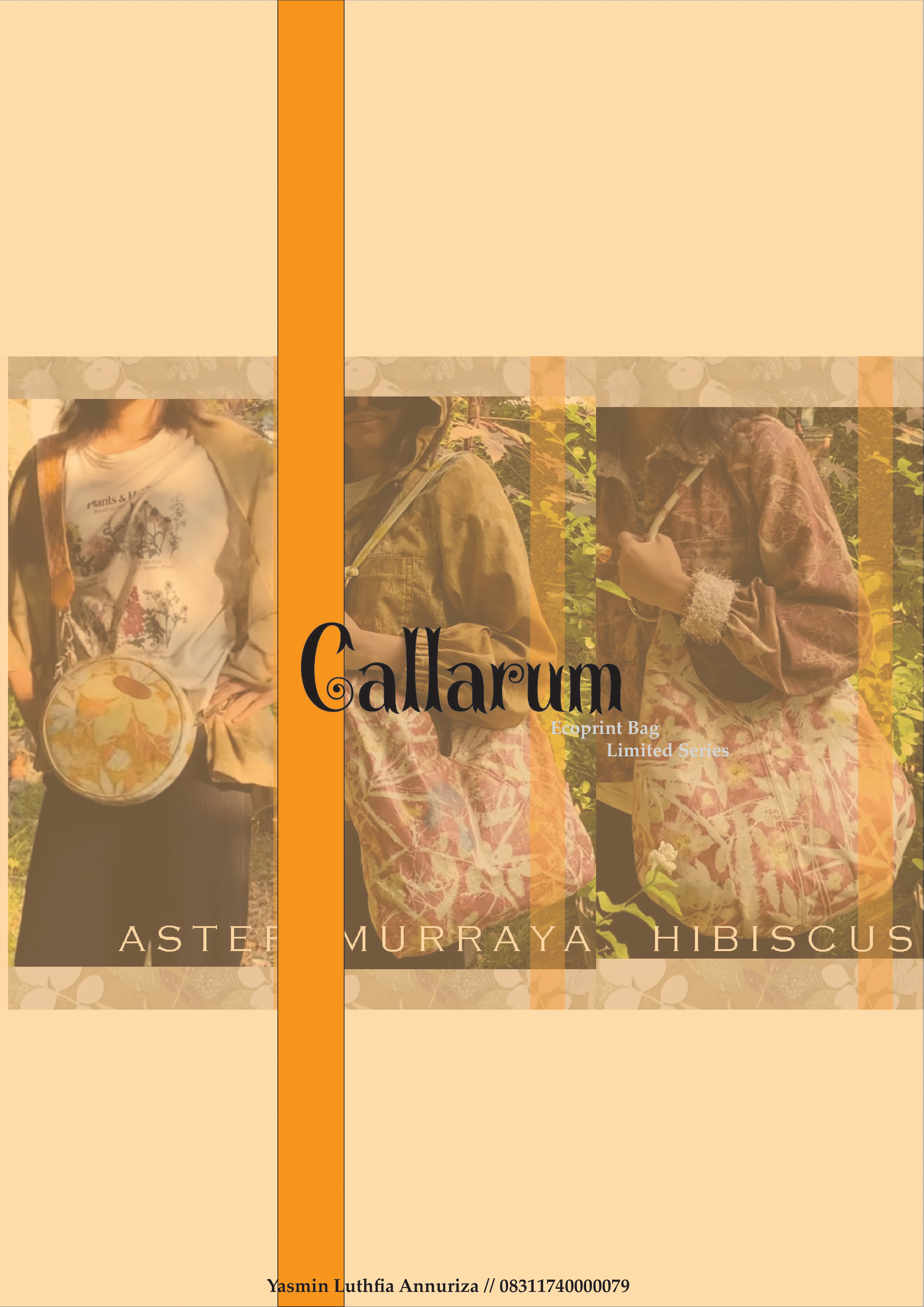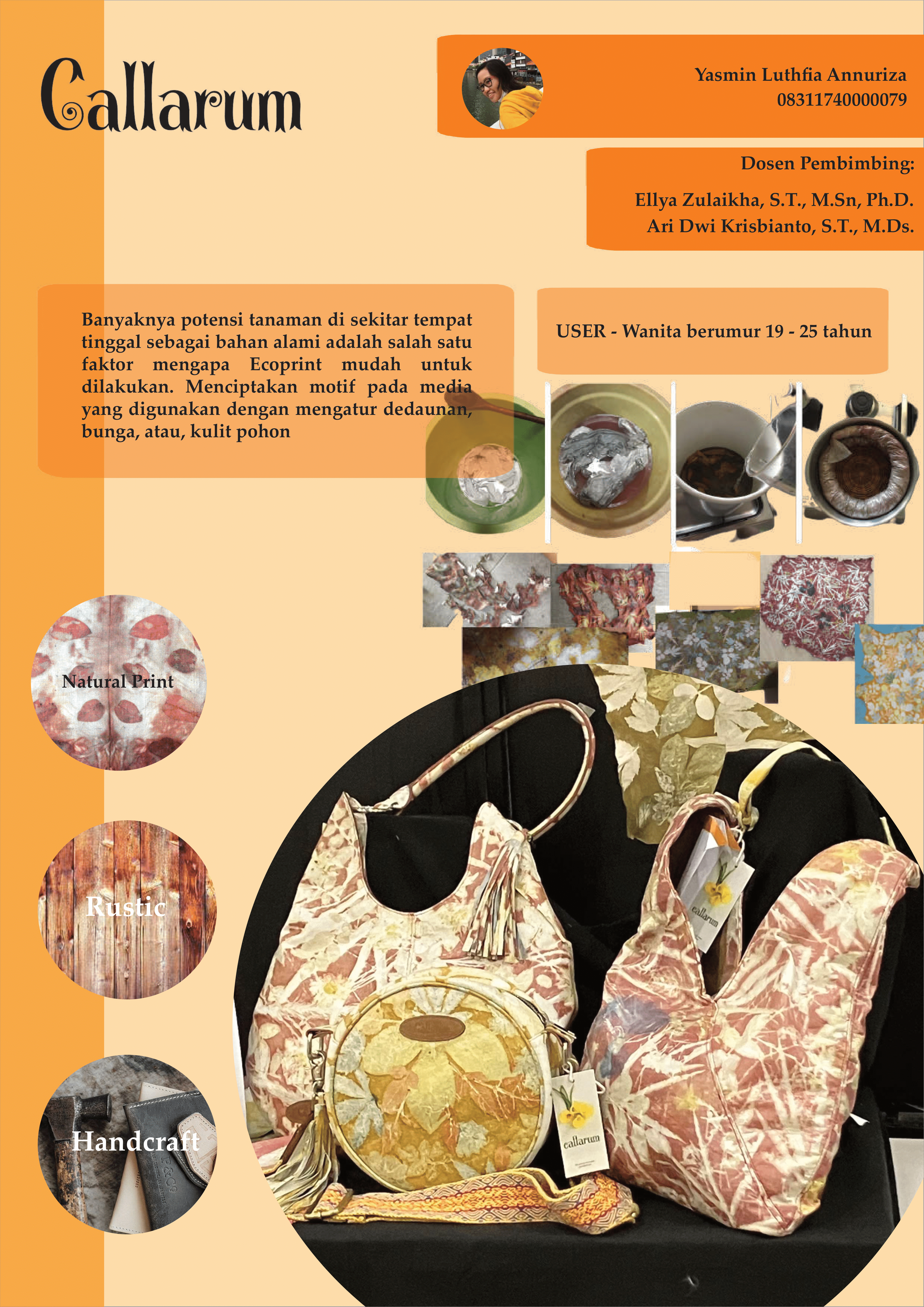Background
A bag is a container made of soft material, has a handle, and is designed to be easy to be lifted or carry. From ancient times, the shape and design of bags have varied due to many influences; surrounding materials, the development of how they will be processed and, cultures. Eco-printing is a method of coloring and creating motifs on fabrics by attaching the original shape of plants to clothes. The technique is in demand as an alternative to coloring materials because of its impact on the eco-friendly environment. However, Eco-printing on animal skin tends to be rarely done due to more careful temperature regulation when staining. Eco-printing on animal skins can add more value to an apparel product, especially on bags so that it gives a rustic and natural impression to the material that has been processed. The method used is an experiment on sheepskin material to carry out eco-printing activities. Combining several techniques based on dyeing textiles and looking for color combinations as possible variations
for the product. Several interviews were conducted to find out which designs are developing and the tastes of the target market. Career women are targeted because of their desire to look good even at work. The result of this research is a bag design that can display eco-printing techniques optimally while at the same time meeting the needs of the target market, both in terms of work and fashion.


